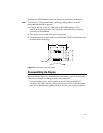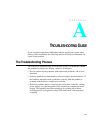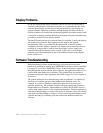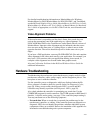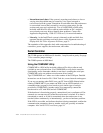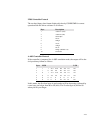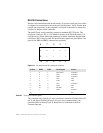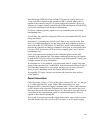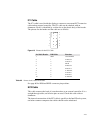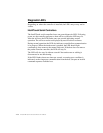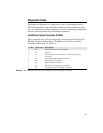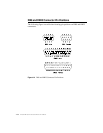A-55
Data Set Ready (DSR) and Clear to Send (CTS) may be used by the host to
verify controller connections and operation. DSR is asserted when power is
applied to the controller and CTS is asserted when the controller's power-on
sequence is complete. Data Terminal Ready (DTR) and Request to Send (RTS)
can also be connected for full hardware handshaking.
Elo driver software typically requires two-way communication and all four
handshaking lines.
If accessible, the controller's diagnostic LED can verify whether RS-232 data is
being transmitted.
Alternatively, a breakout box will tell you if there is any activity on the data
line. It is possible that the port you are using on the host computer is meant to
work with an RS-232 DTE device. To check this, install a null modem cable
between the controller and the host computer's serial port. A null modem cable
converts a DCE device into a DTE device by swapping pins 2 and 3 and the
handshaking lines.
Some serial ports require jumpers for the handshaking lines on the cable
connector at the computer end. The jumper combinations that may be required
to make an RS-232 port work are beyond the scope of this manual. Consult your
computer manual for more information.
If a breakout box is not available, you can measure the DC voltage at the data
output of the controller (pin 2 of the DB-9). It should measure between 8 and 10
Vdc when the touchscreen is not touched, and drop several volts (towards 0)
during a touch, depending on the data format and the baud rate.
If proper RS-232 signal voltage is not present, the controller may not have
power applied.
Power Connections
Check for proper voltage (+5 Vdc) at the power connector P4 pin 1 (+) and pin
4 (-) on the controller (see, page). If the LED is functioning (see page
Diagnostic LED’s), the power supply is probably okay. To access this connector
on the external serial controller, disconnect the power, then remove the cover.
Reconnect the power cable and turn the unit on. There are no exposed electrical
connections in the controller that would be considered dangerous. Power is
applied to the controller through P4.
If no power is present, measure the voltage at the power source, either a source
from the display electronics, a DC-to-DC converter, or an AC power supply.



